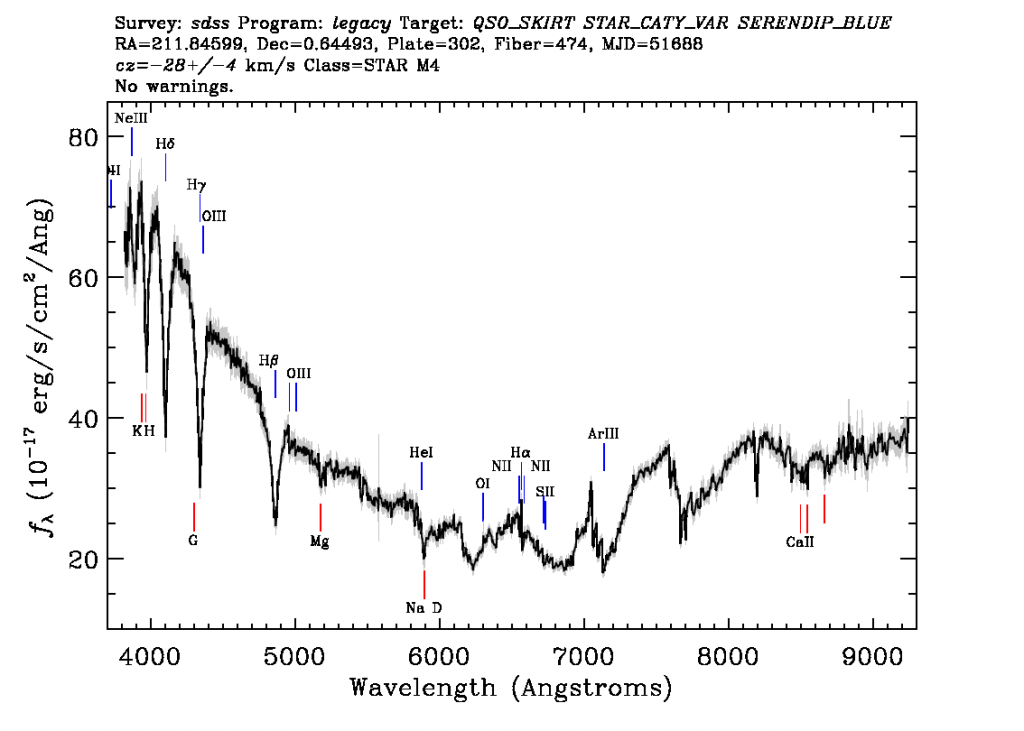Another interesting phenomenon sometimes seen in SDSS data is that of a multiple star system. Sometimes the “star” spectrum you see actually comes from two or more stars orbiting each other. You may notice some spectra with two or more peak wavelengths, indicating two or more temperatures. These peaks could be due to the fact that you are actually looking at a multiple star system, and the stars have different temperatures. You may find a white dwarf orbiting a type G or K star, for example. You always need to keep in mind that any star you see may actually be a multiple star system.
The image below shows the spectrum of a double star system – notice the two peaks in the thermal radiation curve. Astronomers estimate that about half the stars in the sky are part of multiple star systems; however, if the smaller “companion star” is very faint and close to the larger star, you may not detect its spectrum.

To learn more about this star, see its entry in the Explore tool. Can you see both stars in the image?
The Get Spectra and Get Plates tools offer you access to the spectra of literally thousands of stars. Some stars in the SkyServer database do not fit easily into any spectral type.
Now, you are ready to use spectral types to conduct actual research projects in astronomy. Here are a few of possible follow up projects. Try one of these projects, or think of another question you would like to answer by classifying stars into spectral types.
Research Challenge 1. Find a star cluster in the database. Classify the stars in the cluster. Do you notice any distinct patterns of spectral types?
Research Challenge 2. The SDSS primarily looks away from the plane of the Milky Way. However, there are parts of the sky we are analyzing that are substantially closer to the galactic plane. Do you notice any differences in the types of stars you see in these different parts of the sky?
Research Challenge 3. Look through the database for double stars. How frequently do you find them? What are some of the common combinations you find? How easy is it to separate their spectra?
